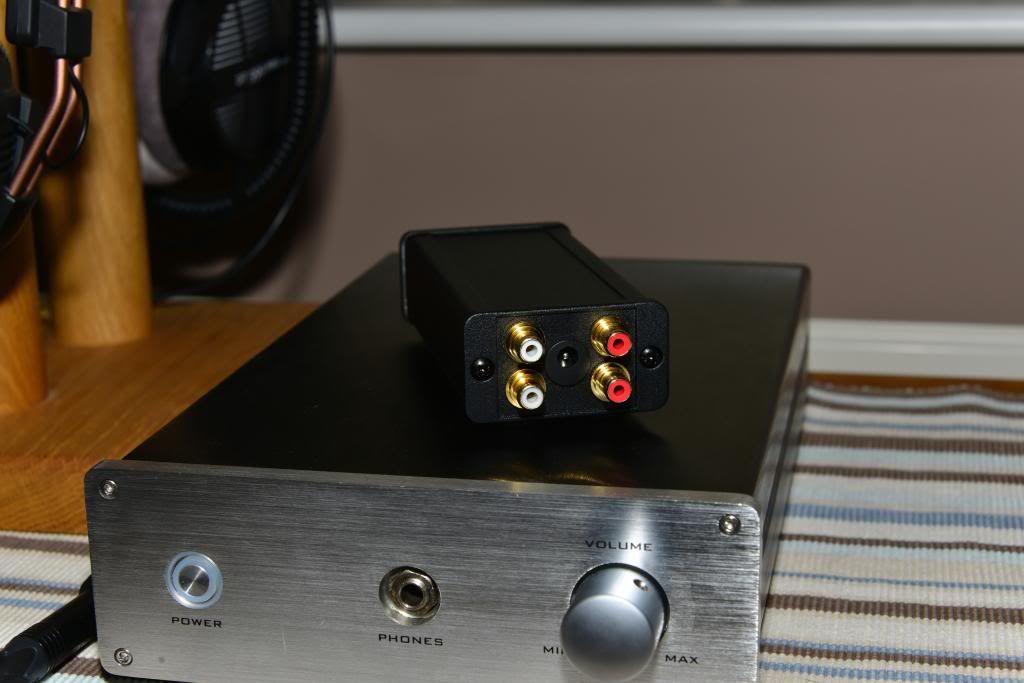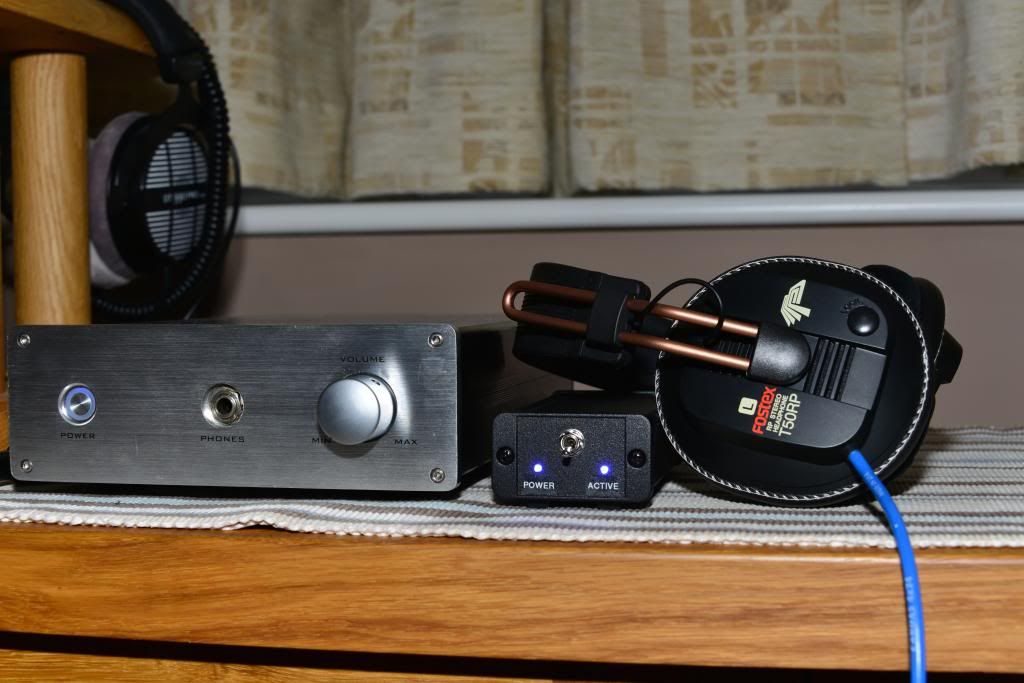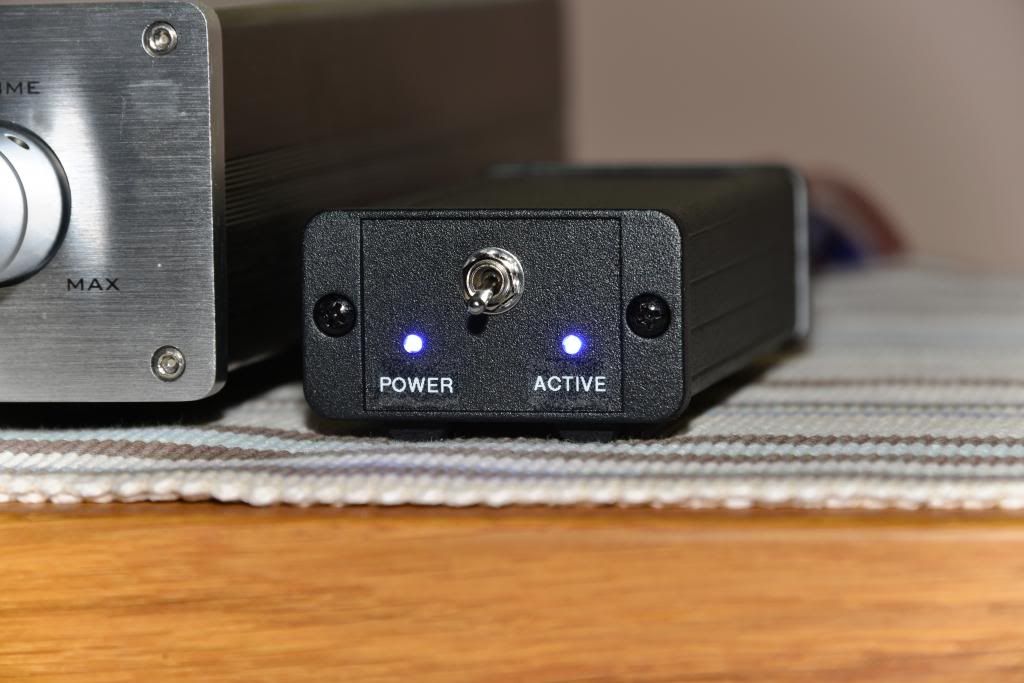solderdude
Administrator
measureutternutter
Posts: 4,886
|
Post by solderdude on May 5, 2013 18:08:40 GMT
PSU voltage is the same (+/-12V via 24v DC and TLE2426). New PCB uses 4 off LM4562. Old PCB uses 3 off TL072. The new PCB had been on for about 3 hours and the old one for 1 hour and are next to each other (no cases - so free air) when I measured. The new PCB ICs are all now at 28. Ambient is around 18. Ah all is explained now... I figured you used the same type of opamps in both PCB's. The quiescent current of the TL072 is only 3mA, the LM4562 is 10mA thus 3.3 times higher. With the same voltage over them (24V) the power consumption (and thus amount of heat produced) is different 0.07W for the TL072 opposite 0.25W for the LM4562. With a thermal resistance of a P-DIP of around 100oC/W means the junction (actual chip) temperature of the TL072 is only 7oC above the surrounding (ambient) temperature. Because the P-DIP radiates and spreads that small increase in heat these IC's barely get warm and perhaps are only 2 or 3 degrees above ambient temperature. The LM4562 get 3.3x hotter on the junction so 23oC above the ambient temperature. Also due to convection and spread of temperature the outside will probably be about 10oC above ambient. As some of the heat is transferred through the metal pins (these conduct heat the best) the PCB itself (and thus its ambient) will also rise. In short... no worries they are supposed to be that warm. If you swap opamps you will see the new board remains 'cold' and the old board get´s warm. The reason why the LM4562 is hotter is because of it's higher speed capabilities. Most high speed opamps have higher quiescent currents. |
|
solderdude
Administrator
measureutternutter
Posts: 4,886
|
Post by solderdude on May 5, 2013 18:15:41 GMT
I'll get in touch with Javier about the filters. Is there anything preventing one from putting two filters (plus power supply) in the same box with a switch to toggle between them, so one can use the same box for two headphones? There are no objections to mounting more than 1 board in 1 enclosure. The power supply needs to be able to deliver at least 100mA for 2 boards. Using a 3 position (rotary ?) switch you can choose between PCB-1, PCB2 or bypass. Most of these switches have 12 contacts (so 4 separate sections). These sections can be used to create a complete bypass or switch LED's in front indicating which filter is active. |
|
dicky
quite active
Posts: 230
|
Post by dicky on May 5, 2013 20:25:03 GMT
PSU voltage is the same (+/-12V via 24v DC and TLE2426). New PCB uses 4 off LM4562. Old PCB uses 3 off TL072. The new PCB had been on for about 3 hours and the old one for 1 hour and are next to each other (no cases - so free air) when I measured. The new PCB ICs are all now at 28. Ambient is around 18. Ah all is explained now... I figured you used the same type of opamps in both PCB's. The quiescent current of the TL072 is only 3mA, the LM4562 is 10mA thus 3.3 times higher. With the same voltage over them (24V) the power consumption (and thus amount of heat produced) is different 0.07W for the TL072 opposite 0.25W for the LM4562. With a thermal resistance of a P-DIP of around 100oC/W means the junction (actual chip) temperature of the TL072 is only 7oC above the surrounding (ambient) temperature. Because the P-DIP radiates and spreads that small increase in heat these IC's barely get warm and perhaps are only 2 or 3 degrees above ambient temperature. The LM4562 get 3.3x hotter on the junction so 23oC above the ambient temperature. Also due to convection and spread of temperature the outside will probably be about 10oC above ambient. As some of the heat is transferred through the metal pins (these conduct heat the best) the PCB itself (and thus its ambient) will also rise. In short... no worries they are supposed to be that warm. If you swap opamps you will see the new board remains 'cold' and the old board get´s warm. The reason why the LM4562 is hotter is because of it's higher speed capabilities. Most high speed opamps have higher quiescent currents. Thanks for the explanation, Frans. |
|
dicky
quite active
Posts: 230
|
Post by dicky on May 14, 2013 18:13:12 GMT
Hi Frans, I built a T50RP filter this afternoon and it's up and running.  It was a piece of cake to put together in just over 2 hours - great instructions, Frans!  I haven't tried adjusting it yet though - I just set the trimmers to their mid-point to check it was all working fine. I assume Px02 adjusts the 3kHz boost/cut?  I do have a problem with it - there is some noise when at max volume (the noise is not there without the circuit so it's not the head amp). However, I'm not too concerned because this noise was present in the previous filter (v1 PCB plus add-on 3kHz lift filter built on veroboard) so I assume I have a noisy PSU, mains or other external interference. I'll check again when I get it in a case. Thanks again, Frans. I thought I'd post here now that I have finally got my filter in a screened case. (Hopefully some pictures attached.) The noise (mains interference) was still present when I fired it up - but only on the right channel. I moved the power and phono connections around and the noise increased/decreased. It disapppeared totally when I gave the right phono a good podge - so it looks like I have a dodgy phono cable. (I'll open it up later and see if it's anything I can repair.)  Also, I had the power cable (24v dc) coiled up - which I have now uncoiled and run away from the phonos. There seems to be a lot less interference now when I poke the offending phono.  Could mains EMI be getting on to the 24v dc cable and getting into the box? As you can see from the photo, the DC plug and phonos are very close.  All that said, when the noise is present, any music at that volume control position would be at insane levels. I'll investigate the phono when I get some time.    |
|
solderdude
Administrator
measureutternutter
Posts: 4,886
|
Post by solderdude on May 14, 2013 20:12:17 GMT
That's a nice looking enclosure !
How much EMI enters the box depends on the used power adapter. It should not be audible though. The fact that only one channel is affected and changes when doing something to that cable suggest the problem is in the cable/socket itself. When that is fixed the noises should also not be there anymore.
|
|
dicky
quite active
Posts: 230
|
Post by dicky on May 14, 2013 20:56:30 GMT
It's a Hammond EMI enclosure - I used one for my DT1350 filter/amp too.
|
|
Dave
very active
Posts: 480 
|
Post by Dave on May 15, 2013 10:36:24 GMT
Apologies Frans and Javier if this is another numptie question - you both know me  - but would/could this filter improve the SQ from my Senn HD 280 pro 64ohm cans? If so I would be interested in getting involved please. I know Javier has his mind rightly focussed on more important matters at the moment so if kits and/or PCBs and BoMs are available I would ask Sean to do the metal melting for me  . Let me know when convenient. Ta!!, Dave. |
|
solderdude
Administrator
measureutternutter
Posts: 4,886
|
Post by solderdude on May 15, 2013 11:38:10 GMT
Hi Dave,
The HD280 cannot be corrected with the filter PCB.
The high-frequency drop-off above 10kHz is simply too much to be 'correctable' 15kHz is down by 30dB already.
Basically the headphone doesn't do much above 10kHz and cannot be persuaded to do otherwise in a gentle manner.
The PCB could be used to lower the 10kHz peak that is present and shelve the missing part above 2kHz but the end result won't produce a headphone that is nice and flat up to even 15kHz.
Signals above 10kHz are not needed for the intended usage (monitor headphone) and is why it doesn't reproduce it either.
|
|
Dave
very active
Posts: 480 
|
Post by Dave on May 15, 2013 15:54:22 GMT
Hi Frans, I guess what you are telling me is that there are better cans out there for really listening to music  . That's a pity really as I like them best of all the several cans I've got, most of which are cheap and/or second hand. I know it doesn't matter how they sound against any 'norm' as long as I like what I hear but I'm always 'taxed' by wondering what a really good set of cans sound like. I've now got my Class A mono-blocks up and running (with thanks to all involved  ) and I'm very happy with them - Sean has done a very good job, as usual. I think they get better with each listening session, which is what I think others have found. Mega expenditure for me but money well spent  . Thanks for your advice. Cheers, Dave. |
|
solderdude
Administrator
measureutternutter
Posts: 4,886
|
Post by solderdude on May 15, 2013 16:02:30 GMT
The HD280 aren't bad headphones and even owned one for a while.
They just are not extended (there is nothing there above 10kHz) which makes them non-fatiguing.
I liked the sonic signature with good bass and forward mids.
I can still hear to 16kHz and like my headphones to be flat till at least that point.
It's why I sold them in the end... the lack of extension.
Not desired for monitoring headphones at all and that's what they are intended for.
Just like the HD380 (though that one is more extended) and the HD-25.
They are purpose built.
For serious listening I would not recommend them but they are a nice listen.
|
|
Rabbit
Administrator
Posts: 7,091
|
Post by Rabbit on May 15, 2013 17:59:03 GMT
Hi Dave, You can see it here on the graph:  Everything drops away after 10 or so KHz but lovely flat mids and slightly raised bass. Nice and non-fatiguing for long listening and pretty flattish too, so they are great for using as a monitoring headphone but perhaps not the best for hi fi stuff. I quite like them too. Closed headphones are a minefield!!! Dicky, that Hammond EMI enclosure looks really nice. |
|
Dave
very active
Posts: 480 
|
Post by Dave on May 15, 2013 18:23:44 GMT
Thanks for that Ian - a picture is worth a thousand words - it confirmed my rough interpretation of Frans' explanation.
I realise there have been recent discussions regarding headphones but can I ask the membership as a whole what closed back cans they would recommend for hifi listening within a budget of £200/Euro250. I don't object to second hand if they are in good condition and spare/replacement ear pads are available.
I am not into opera or 'heavy' classical but do like light classical, instrumental, particularly piano, female vocals and MoR classics (Sinatra, Fitzgerald sort of stuff).
TIA,
Dave.
|
|
solderdude
Administrator
measureutternutter
Posts: 4,886
|
Post by solderdude on May 15, 2013 18:41:02 GMT
It depends on how much isolation you want.
Real good solutions for closed back are not abundant.
Best cheap solution IMO is the T40RP/T50RP modified to be completely closed with a correction filter.
I think nothing closed can beat that.
If you don't want the final word in isolation the D2000 would be my best guess.
If you are lucky the K550
Shure SRH-840 or if you want them more airy and less bassy the SRH940
The 2012 AudioTechnica ATH-M50 comes to mind as well.
|
|
Rabbit
Administrator
Posts: 7,091
|
Post by Rabbit on May 15, 2013 18:43:13 GMT
That's a difficult question, Dave. I like the Fostex T40 modded, but I could understand people NOT liking them too. It so depends on the type of sound that you like I think. I also don't think the cost is a great indicator either. I use the Noise cancelling Senn PCX 450 with the noise cancelling off. If the wife whacks the TV up, I turn the cancelling on. It's an expensive headphone though. I tend to make the best of a bad bunch with closed headphones. TBH, there isn't one that doesn't seem to suffer from being closed!!! So what I do is use them as a convenience and not be too critical of the sound. Funnily enough, I enjoy some of the cheaper offerings like the Creative-Aurvana Live. Not particularly accurate but I feel quite relaxed with the sound. How about a closed Superlux. I must say, they are very impressive for the cost and you'd pay quite a bit more for something similar imo. I even use a closed Denon headphone which has a humungous bass.  The closed headphone is one area where I find things very problematic and I can honestly say that the modded T40 or 50 with a filter is a flat headphone that is better extended. Whether you like the sound of a flat headphone though may be another matter. We are all kind of 'trained' into bass humps and treble lifts so a flat headphone is perhaps 'boring' to many. Don't put the HD280 down though, Dave. They're a good headphone. Don't worry about it if you like them. I personally like them as well but the problems come when you realise and someone like Frans comes along and tells you what its faults are!!!! It's unsettling, I know. If you're happy with them, stick by them or else you'll be running in ever decreasing circles with closed headphones. I've done so many circles that I get dizzy. 280 pro is a good standard of headphone. What I find really funny is how I can just relax with these £25 Superlux headphones on my head!!! (Embarrassing or what?) |
|
solderdude
Administrator
measureutternutter
Posts: 4,886
|
Post by solderdude on May 15, 2013 19:00:51 GMT
The only closed Superlux I liked more or less is the HD661.
I owned the HD662 and some other Superluxes as well but none of them come close to the HD681.
I do not expect the HD662-EVO to be much better than the old HD662.
Ian is right...
Who cares what graphs or other people say.
If you like the 280 very much and are not bothered by the 10kHz limit then I suggest you simply keep using it.
The cheaper closed headphones mostly have some negative aspects that may or may not (start to) bother after a while or on direct comparisons.
|
|








 - but would/could this filter improve the SQ from my Senn HD 280 pro 64ohm cans? If so I would be interested in getting involved please. I know Javier has his mind rightly focussed on more important matters at the moment so if kits and/or PCBs and BoMs are available I would ask Sean to do the metal melting for me
- but would/could this filter improve the SQ from my Senn HD 280 pro 64ohm cans? If so I would be interested in getting involved please. I know Javier has his mind rightly focussed on more important matters at the moment so if kits and/or PCBs and BoMs are available I would ask Sean to do the metal melting for me 
